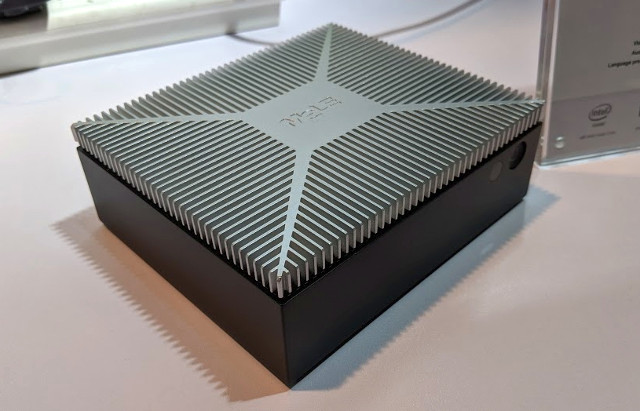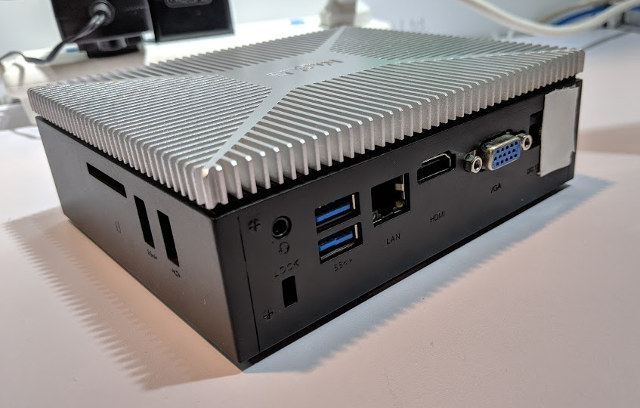Gemini Lake mini PCs are being announced at CES 2018, and we can expect them to sell in Q2 2018 for a price similar to Apollo Lake models all other features being equal. We’ve already seen ZOTAC ZBOX PI226 & PI336, ASUS unveiled their PN40 mini PC with few details, and of course Intel’s own GLK NUCs should be brought to market soon enough.
MeLE has made some decent Apollo Lake mini PCs in the past year with their PCG35 Apo and PCG03 Apo models, so it’s no surprise the company is now showcasing their upcoming PCG63-APL4 based on Gemini Lake processors at CES 2018. MeLE PCG63-APL4 specifications:
MeLE PCG63-APL4 specifications:
- SoC (one or the other)
- Intel Celeron J4005 dual core Gemini Lake processor up to 2.0/2.7 GHz with 12EU Intel UHD Graphics 600 @ up to 700 MHz; 10W TDP
- Intel Celeron J4105 quad core Gemini Lake processor up to 1.5/2.5 GHz with 12EU Intel UHD Graphics 600 @ up to 750 MHz; 10W TDP
- Intel Pentium J5005 quad core Gemini Lake processor up to 1.5/2.8 GHz with 18EU Intel UHD Graphics 605 @ up to 800 MHz; 10W TDP
- System Memory – Up to 8GB LPDDR4
- Storage – 32GB eMMC flash, M.2 SSD slot (40 and 80mm), SATA slot for 2.5″ HDD/SSD, SD card slot
- Display – HDMI 2.0 up to 4K @ 60Hz, VGA
- Audio – 3.5mm headphone jack, audio output via HDMI
- Connectivity – Gigabit Ethernet, 802.11ac WiFi, Bluetooth 4.2
- USB – 3x USB 3.0 ports, 1x USB 3.1 type C port, 1x USB 2.0 port
- Misc – Security lock, power button, window for IR receiver
- Power Supply – 12V via power barrel jack
- Dimensions – TBD
PCG63-APL4 is quite a confusing as it sounds a like “Apollo Lake 4”, using something like PCG63-GLK1 may have more sense.
 The complains said they plan to support both Windows 10 or Ubuntu, but last year, they completely ignored Ubuntu, and AFAICR did not launch any Ubuntu models, like they did in 2016. Mass production is scheduled to start at the end of March 2018, which probably means sales will start in early Q2 2018. No pricing info was provided.
The complains said they plan to support both Windows 10 or Ubuntu, but last year, they completely ignored Ubuntu, and AFAICR did not launch any Ubuntu models, like they did in 2016. Mass production is scheduled to start at the end of March 2018, which probably means sales will start in early Q2 2018. No pricing info was provided.
Via Liliputing

Jean-Luc started CNX Software in 2010 as a part-time endeavor, before quitting his job as a software engineering manager, and starting to write daily news, and reviews full time later in 2011.
Support CNX Software! Donate via cryptocurrencies, become a Patron on Patreon, or purchase goods on Amazon or Aliexpress




